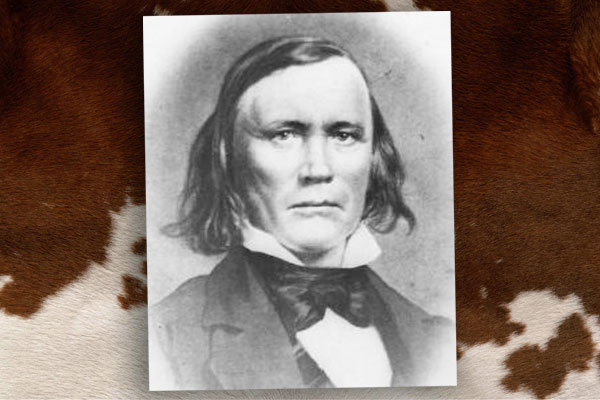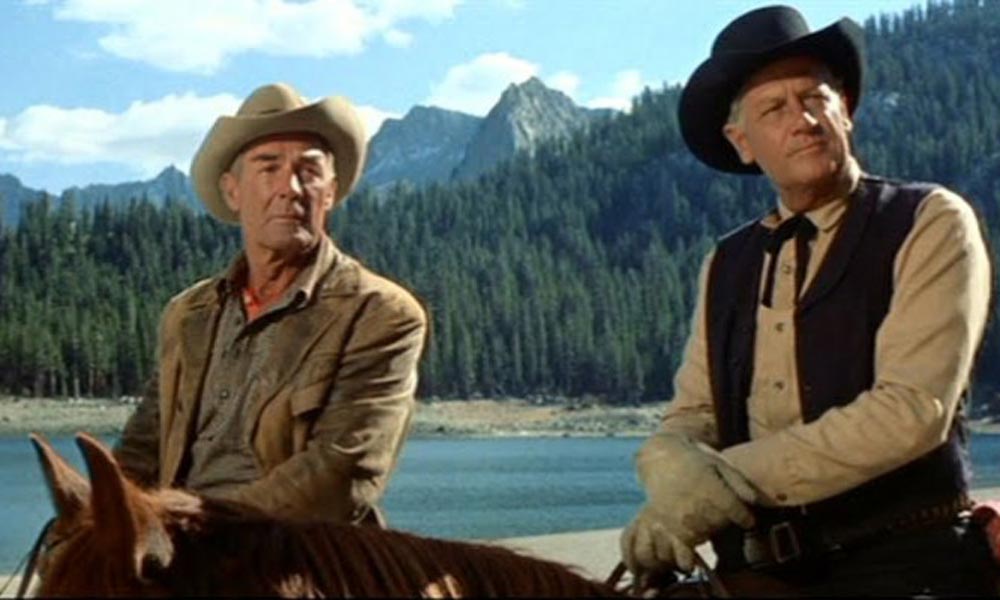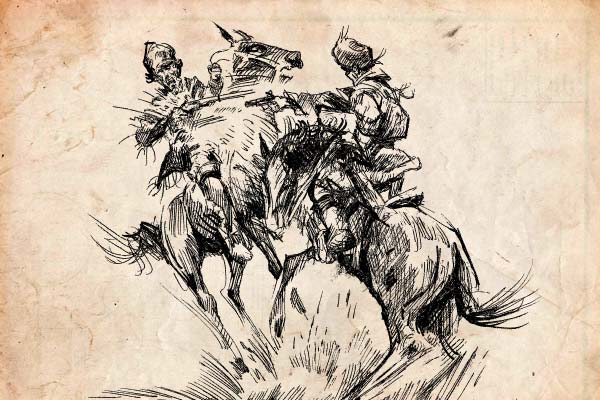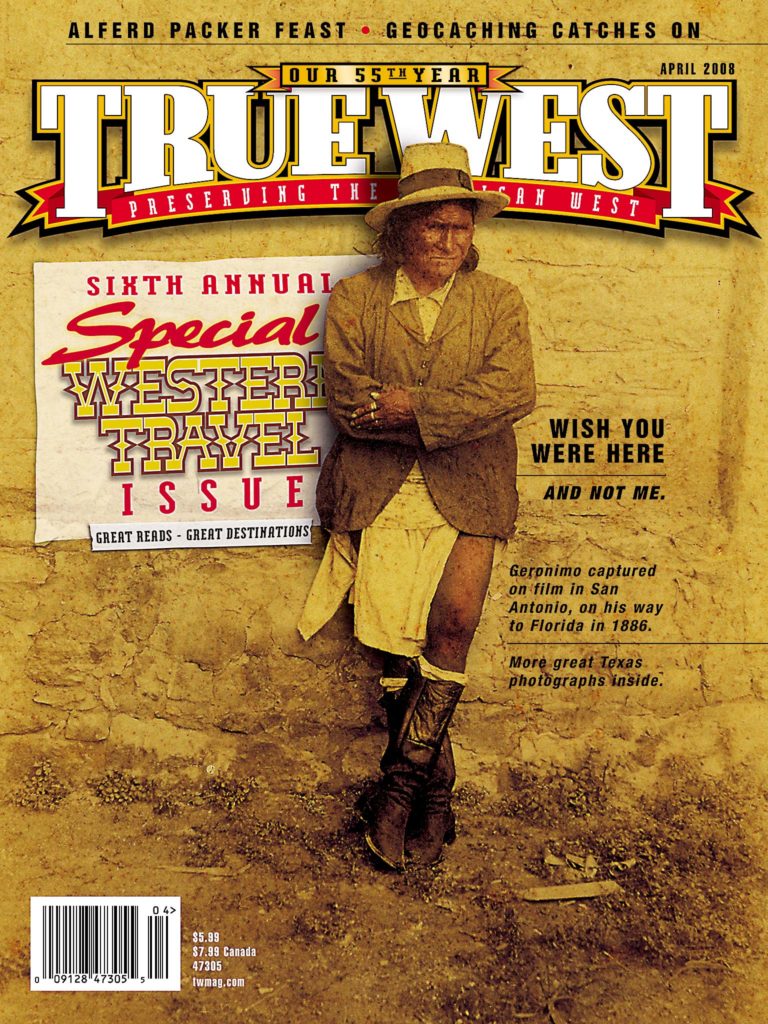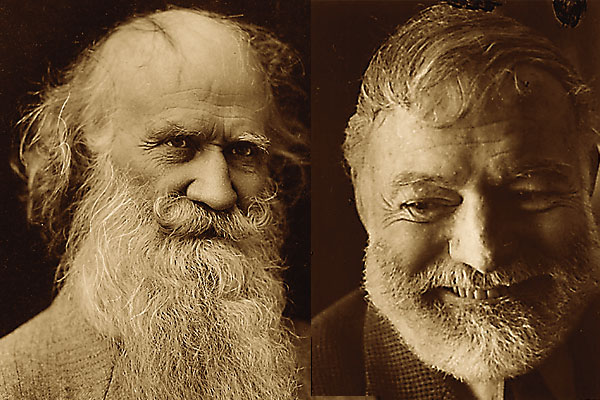
Do you know the history behind…the pedometer craze sweeping across the nation?
Look to the Old Order Amish, who naturally log more than the recommended 10,000 steps a day a pedometer helps walkers measure. These folks pretty much live like many did on the frontier: they rely on horses for farming and transportation, wear traditional clothing and live a life without electricity and telephone access.
When the Amish were recorded as having the lowest rate of obesity of any community in North America, scientists inquired why.?They packed up their equipment and headed to an Old Order Amish community in Ontario, Canada, to study Amish people ranging in age from 18-75, in March, a month for moderate activity (not during the more strenuous harvest season).
Scientists discovered that in their daily activities, men logged an average 18,000 steps per day while women logged an average 14,000 steps. Their averages only dipped as low as 10,000 on their day of rest: Sunday, according to a report published in the August 2004 Medicine and Science in Sports and Exercise.
The guide established from these results is: younger folks, up through their 20s, should probably walk 15,000 steps (boys) and 12,000 (girls). For those older, 10,000 steps should be sufficient to keep a healthy Body Mass Index (BMI).
How can we inspire you to walk 10,000 or more steps a day, especially if you’re not a person whose job involves physical labor that more easily allows you to achieve this?
Nothing gets people walking like a destination worth reaching. So we came up with literary landmarks worth visiting, as a companion guide to any vacations inspired by our article on the books that will launch your trips across the West.
Visiting the sites you’ve read about or spots that are associated with famous Western authors is a perfect opportunity for you to turn on the pedometer, as much of what you will want to see is going to involve legwork on your part. You can also aim for your 10,000 steps-a-day goal by taking part in our geocaching adventures.
If you have favorite literary landmarks we have not covered, please add your comments below, so others can enjoy your favorites as well!
Walk the read, True Westerners! Twain, London, Cather, Sequoyah and many more authors await you.
WILL ROGERS
You’ll find more than 2,000 volumes by, about or referencing this humorist and author of six books, who also wrote more than 4,000 syndicated newspaper columns, at the Will Rogers Memorial Museum in Claremore, Oklahoma. His career is well documented in photographs and original manuscripts. Nearby Oologah is the site of his birthplace, where the ranch home his father built out of hand-hewn logs has held up remarkably well.
Road Trip Audio
More than seven hours of 19 episodes of the Will Rogers Program for only $5 is a deal you can’t beat! We found it at the Old Time Radio Show Catalog (available online at otrcat.com or via mail at P.O. Box 19234 Lenexa, KS 66285).
ZANE GREY
Zane Grey fell in love with Arizona while visiting the West Coast during his honeymoon in 1906. Like a dutiful admirer, recalling a loved one’s charms over and over again, he would set 24 of his 56 romantic Westerns in Arizona. Under the Tonto Rim comes to life here when you walk along Tonto Creek, near the Mogollon Rim, and view the scrub-colored hills of the Tonto National Forest.
The cabin Grey had built for him at the base of the Mogollon Rim in 1920 was destroyed by the Dude Fire in 1990. Fans kept driving in to Payson, asking for directions to “the cabin,” so a replica was built. The nearby Rim Country Museum has shared its collection of rare Zane Grey artifacts, so they can be housed at the cabin that shares the author’s history.
While in Rim Country, be sure to visit NAU in Flagstaff to view the Zane Grey Collection at the Cline Library. It features 70 works by the author, as well as posters of movies adapted from his books, a few of his personal belongings and his correspondence, dating from 1901 through 1937, two years before the 67 year old died in Altadena, California.
Bookmark This Trip
Tonto Creek flows into Roosevelt Lake, where you’ll find a monument to Chief of Indian Scouts Al Sieber, who was killed here while overseeing his scouts as they constructed the road.
SHARLOT HALL
At 12 years of age, Sharlot Hall came to the Arizona Territory with her parents in 1882. She grew up to be a fervent collector of local artifacts, and then signed on as territorial historian from 1909 to 1911 (the first woman to hold territorial office). By 1928, she had moved her collection of artifacts and manuscripts into a museum she opened in the 1864 Governor’s Mansion in Prescott, Arizona.
Her efforts inspired others to contribute their mementos of early Arizona history, and now this museum is the largest in the central territory of Arizona. The museum was named after her when she died in 1943.
For those interested in her literary life, you can view her work desk and bookplates, and of course works by the poet and photographs of her life.
Bookmark This Trip
Imbibe libations at Whiskey Row on Montezuma Street. On July 14, 1900, a fire quickly swept up saloons in its blaze. Workers at four of those saloons managed to move some liquor to the plaza, and at least three pianos were moved as well. By the next night, the plaza was in full swing. Today, Arizona’s oldest watering hole, the Palace Saloon, rebuilt in 1901, still has the 1880s Brunswick Bar that was carried to safety during the fire. Long live Whiskey Row!
JACK LONDON
Jack London State Historic Park in Glen Ellen, California, does not memorialize the writer solely in name. It is home to actual spots the author worked and played in.
London purchased Beauty Ranch in 1905, the same year White Fang was published. His home, Wolf House, burned in 1913, but the home his second wife built after his death three years later, House of Happy Walls, is a museum showcasing London’s works, his memorabilia and photographs. Furniture designed by Jack and his wife Charmian is also on display. His grave site is located here, as well, if you want to stop by and pay tribute to him.
He also wrote a road novel fifty years before Kerouac, The Valley of the Moon, that follows Billy and Saxon Roberts of Oakland through California, as they search for land they can farm on their own. The pastoral life depicted in this novel actually reflects that of Glen Ellen.
Walking the Read
Answer London’s Call of the Wild without having to travel all the way to Alaska. Mush into winter at Squaw Valley near Lake Tahoe on dog sled tours pulled by Siberian and Alaskan huskies. Okay, so the huskies are doing most of the “walking,” but your feet deserve at least one opportunity for rest!
Bookmark This Trip
Heinold’s First and Last Chance Saloon at Jack London’s Square in Oakland is a Barbary Coast saloon, made in 1883 from the timbers of a whaling ship, that truly connects with the writer. Owner Jack Heinold remembered the 1891 day London first came in, striking a deal to buy a boat from an oyster pirate French Frank. London sealed the deal, and Heinold laughed at how the 15 year old then stole Frank’s woman—Frank was 30 years his senior! A month before Heinold passed away, he told reporter John C. Higgins in 1933, London “was the finest and best I’ve ever known in fifty years on this spot.”
MARI SANDOZ
Nebraska is still “Old Jules Country,” which is also the name of an impressive exhibit featuring quotations by Mari Sandoz and photographs of the historical sites mentioned in her famous novel Old Jules that were taken by Kira Gale. The Mari Sandoz High Plains Heritage Center in Chadron also houses manuscripts by Sandoz, sound recordings of the author, photographs, scholarly works written about her and her correspondence. Her grave is located in Gordon, overlooking her father’s Sandoz Sand Hill Ranch.
A.B. GUTHRIE, JR.
The author moved back to his hometown after his first novel about Montana was a big hit, The Big Sky, published in 1947. The Old Trail Museum in Choteau houses his typewriter, family photographs and a scrapbook detailing his journalism career in Lexington, Kentucky. The Big Sky state has not forgotten the man who gave it its nickname.
Walking the Read
Hike Ear Mountain, part of the Montana Tetons, which early settlers called Elephant Ear Butte. While here, reread the last few paragraphs of The Big Sky, in which Mountain Man Boone Caudill recalls this landmark.
WILLA CATHER
A film showing how Willa Cather’s hometown and her love of Nebraska’s pioneer country influenced her writing kicks off your experience of the Willa Cather Pioneer Memorial in Red Cloud, Nebraska.
Then you can tour her childhood home, keeping in mind mentions of the home in her book, The Song of the Lark. Visit St. Juliana Catholic Church, a setting in My Antonia. See the farm home of Willa’s uncle, whose home and family inspired her Pulitzer Prize-winning novel, One of Ours.
Anyone who reads Cather’s works knows Red Cloud intimately already, and it’s quite a treat to see it for yourself.
WILLIAM ALLEN WHITE
Emporia, Kansas, has not forgotten its greatest editor, as seven sites pay tribute to him. His 1885 home, where he lived until he died in 1944, supposedly housed six presidents who visited with him. Take a drive along the memorial drive. Visit his namesake elementary school at 902 Exchange, which features photographs of White and his family in the lobby. The memorial library contains the author’s letters, manuscripts and photographs. The park named after him and his son William is next to The Emporia Gazette headquarters, home to the newspaper he purchased in 1895. You can visit the museum here if you make an appointment.
The last site, Peter Pan Park, shares a loving but sad story, as it was named in memory of the editor’s daughter Mary, who was killed at 16 during a horseback riding accident. Like Peter Pan, she never wanted to grow up. Since 1952, Kansas schoolchildren have selected a children’s book honored by an award named after the prominent editor.
Road Trip Music
“Don’t Let’s Start” by They Might Be Giants. White’s smiling face graced the cover for the single, as well as large cardboard cutouts posted during 1980s concerts when the alternative rock band played this song.
WALTER VAN TILBURG CLARK
Best known for his 1940 novel The Ox-Bow Incident, Walter Van Tilburg Clark lived in Reno, Nevada, as a youth. His autobiographical novel, The City of Trembling Leaves, discusses 1920s Reno, and your enjoyment of it will increase tenfold by visiting the nearby sites Pyramid Lake and Lake Tahoe.
Walking the Read
The Truckee River Walk includes a stop on Arlington Street, where you can see the Victorian homes designed by Reno architect Frederick de Longchamps, shaded by Cottonwoods and Elms.
This picturesque residential walk will show you what inspired Clark to call Reno the “City of Trembling Leaves.”
ERNEST THOMPSON SETON
The author and naturalist who helped organize the Boy Scouts of America in 1910 and wrote the first American Scout manual, Ernest Thompson Seton, is honored by the Seton Memorial Library near Cimarron, New Mexico.
When Waite Phillips donated this land to the Boy Scout cause inspired by Seton’s Woodcrafts Indian youth group, Phillips had three provisions:?his horse Gus be allowed to stay there, that his family be allowed to visit and that it remain a working cattle ranch.
Seton wrote more than 40 major books about natural history, with his best known being Wild Animals I Have Known. At the memorial library, you’ll see his collection of artwork, animal skins and Indian artifacts.
Bookmark This Trip
Youth lucky enough to attend Philmont Scout Ranch should check out Indian Writings Camp, where you can see archaeological sites and petroglyphs preserving Apache and Ute tribal history.
SEQUOYAH
This Cherokee inventor of the Cherokee alphabet built his log cabin in Sallisaw, Oklahoma, in 1829. Within a few years after he created a system of 86 characters to symbolize the sounds in the language, thousands of Cherokees could read and write their language of birth. The cabin features numerous artifacts linked to him and his achievements.
LAURA INGALLS WILDER
Six books by Laura Ingalls Wilder are set in DeSmet, South Dakota, and you can see 18 sites mentioned in those books during a tour promoted by the Laura Ingalls Wilder Memorial Society.
Two houses are open to the public: the Surveyor’s House, the setting of By the Shores of Silver Lake, and the house Pa built for the Ingalls family, featured in both On the Way Home and A Little House Sampler. You can also visit the cemetery where the family is buried.
Theatre Trip
Every summer, Laura and her prairie are brought to life in the outdoor pageant “These Happy Golden Years.” This year’s pageant runs on July 11-13, 18-20 and 25-27, 2008.
HARVEY W. SCOTT
Any journalist worth his salt today is familiar with The Oregonian. Well, Harvey Scott is one of the pioneer editors who helped build up the newspaper, from 1865 until his death in 1910. (He took a five-year break, starting in 1872, to serve as collector of customs.) For the most part, though, he was the driving force shaping the paper’s conservative perspective.
The articles he wrote on Oregon history make up the six-volume History of the Oregon Country, published in 1924. The Harvey W. Scott Memorial Library in Forest Grove, Oregon, memorializes him.
FRED GIPSON
Fred Gipson’s hometown of Mason, Texas, pays tribute to the novelist, best known for his 1956 Old Yeller. You’ll find a life-sized bronze memorializing the boy and dog in the library. The Newbery Award-winning book chronicled how an ugly stray dog, Old Yeller, helped a young boy Travis and his family survive on the Texas frontier while his father was away on a cattle drive to Abilene.You can learn about the writer through photographs, his typewriter, his manuscripts and his personal memorabilia.
Bookmark This Trip
The reconstructed Fort Mason was Robert E. Lee’s last command in the U.S. army. It’s found on the Texas Forts Trail, so if you have more time to drive around, continue on the 650-mile route to visit other frontier forts.
THEODORE ROETHKE
The poet who identified best with the criminal Dillinger once wrote to a friend back East, “As the only serious poet within 1,000 miles of Seattle, I find I have something of the status of a bank robber in Oklahoma or a congressman in the deep south.”
His arrival in Seattle would inspire Northwest images and tropes that brought him major literary prizes and established his place in American literature as a regional poet. His final volume The North American Sequence was described by him as “his own spiritual version of a Northwest passage” and is his best work. The auditorium at the University of Washington in Seattle memorializes the poet, who taught on the faculty from 1947 until his death in 1963.
WALLACE STEGNER
Stegner graduated from the University of Utah in Salt Lake City in 1930 and also taught here for a year. The collection housed here is largely a repository for photographs taken of the author and the people and events associated with him.
His first important novel was Big Rock Candy Mountain, but he is also recognized for his environmental activism. The University’s College of Law even has a Center for Land, Resources and the Environment named after him.
Bookmark This Trip
Visit the site where the first Mormon settlers entered the valley in 1847, This is the Place Heritage Park. The park’s living history Heritage Village features 40 original and replica buildings typical of 19th-century Utah.
OWEN WISTER
“When you call me that, smile!” True fans of the American West know this line by heart, and know the source of it is Owen Wister’s The Virginian, a prototypical Western novel that created the basic Western formula still used to this day. In his 1894 diary, Wister attributed the basis for this quote to John Lawrence in Fetterman, Wyoming, in 1885 or 1886. During a card game, Lawrence turned to the man who had been calling him names and said, “You smile when you call me that!”
In Medicine Bow, Wyoming, you can visit the general store where Owen slept on the store counter his first night in Medicine Bow (he later recounted this experience in the novel). You can also visit his home and hunting lodge, now housed in the train depot, along with the Medicine Bow Museum. The three-story 1911 Virginian Hotel was named after his 1902 book and is a national historic
site today.
Writers interested in Wister’s vision of the West would be wise to plan a visit to Laramie, where you can view his diaries, letters, photographs and manuscripts that informed the author’s work at the American Heritage Center at the University of Wyoming.
BOOKMARK THESE LITERARY LANDMARK TRIPS!
Bookmark Ernest Hemingway
Ernest Hemingway’s last home, a 17-room house in Ketchum, Idaho, was once open to the public only one day each year, on July 21, Hemingway’s birthday, but the Nature Conservancy is in the middle of renovations and has ceased this practice. You’ll see pictures of Hemingway and his family, the last letter he wrote before he committed suicide in this house on July 2, 1961, and a memorial to the Nobel Prize-winning author that overlooks Trail Creek. His body is buried in the Ketchum cemetery.
Joaquin Miller
Joaquin Miller’s cradle may have been a “covered wagon pointed west,” but even this established poet was not above criticism.
When you walk around Joaquin Miller Park in Oakland, California, a garden he called “The Hights” when he settled here in 1886, don’t think of his best-known poem, “Columbus,” but his most controversial one, “Kit Carson’s Ride.”
General Edward F. Beale, who accompanied Kit Carson during the Mexican-American War of 1846-48, wrote a scathing review of this poem to poet Bayard Taylor. It “ought to be put in a moral glass bottle, labeled ‘Poison,’ put on a high shelf in the cupboard out of reach of children, and forgotten,” he wrote. He even went so far as to regret “that the scalp of Joaquin had not been counted among the ‘coups’ of that redoubted knight of the prairies and mountains.”
What was Beale so upset about? In Miller’s Songs of the Sierras, Carson saved himself while a prairie fire overtook his Indian bride, and even escaped on his lady love’s horse.
Miller heard the loud and clear complaints, and revised the poem when he released his complete works, admitting “the end was coarse and unworthy the brave spirit of Kit Carson.” The new ending showed the fire consumed only the lovers’ fellow companion and the horse.
• TWMAG.COM: Read the poems and the letters exchanged between Beale and Taylor
Walking Tom Sawyer in California
Mark Twain Plaza is located near the Transamerica Pyramid, San Francisco’s tallest skyscraper and the site of the Turkish Baths where Twain met a volunteer fireman named Tom Sawyer, while the author was reporting for the Daily Morning Call. It’s likely this man did inspire the name of Twain’s novel, as a biographical sketch of the fireman, published in 1900, mentioned this; neither Twain nor the fireman challenged the claim.
What most don’t know about this building is that a California Gold Rush artifact lies exactly beneath it! Fortune seekers came here via the whaling vessel Niantic, which was converted into a hotel in 1849. Fires destroyed it a few years later, but you can view artifacts from the ship at the San Francisco Maritime Museum.
Walking Tom Sawyer in Missouri
Hannibal is home to Mark Twain’s Boyhood Home and Museum; the New Mark Twain Museum; Judge Clemens’ Law Office; Pilaster House where Judge Clemens died; Grant’s Drug Store, which was stocked with Aunt Polly’s medicines in Tom Sawyer; and a statue of Mark Twain’s likeness and one of Huck and Tom.
You can also visit Becky Thatcher’s house, where the model for the Tom Sawyer character, Laura Hawkins, lived during the 1840s.
The cave Twain called McDougal’s Cave came to be called after the author, thanks to the notoriety he brought it from Tom Sawyer. Guides will point out the places Twain mentioned in his writings.
In Stoutsville, the birthplace of Mark Twain, you’ll find the restored two-room cabin Samuel L. Clemens was raised in that was moved from the village of Florida to the museum at Mark Twain State Park in 1930. The museum also exhibits Twain’s inventions, family artifacts and furniture, and the author’s books, most notably an 1876 manuscript of The Adventures of Tom Sawyer.
Bookmark Helen Hunt Jackson
When Ponca Chief Standing Bear told Helen the plight of his people, she resolved to raise awareness of injustices against Indians in the American West. Her two most important books on the topic was her first, A Century of Dishonor, and Ramona.
Visit the reconstructed home of this “woman with a cause,” featuring salvaged rooms moved from her residence at 228 E. Kiowa Street to the Colorado Springs Pioneer Museum in Colorado. Her furnishings and possessions are on display.
In nearby Cheyenne Mountains, make a stop at her grave at Helen Hunt Falls.


